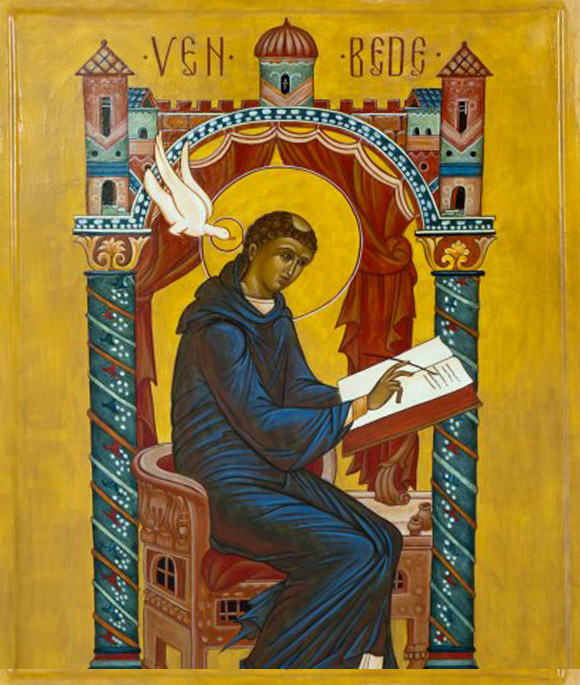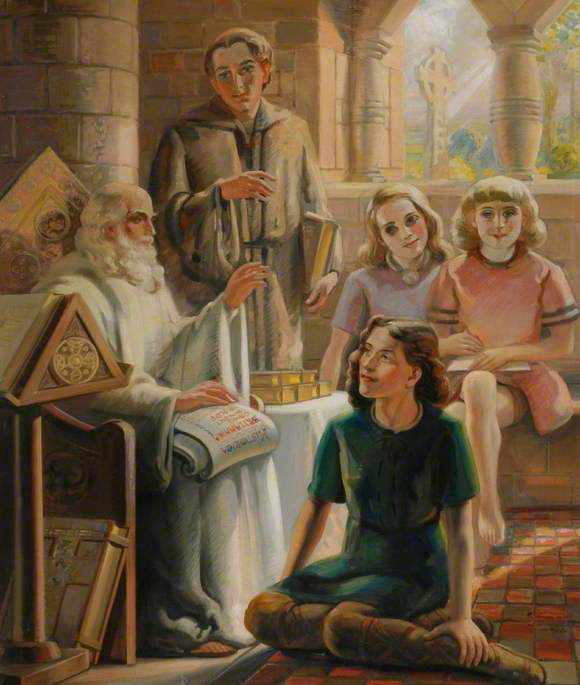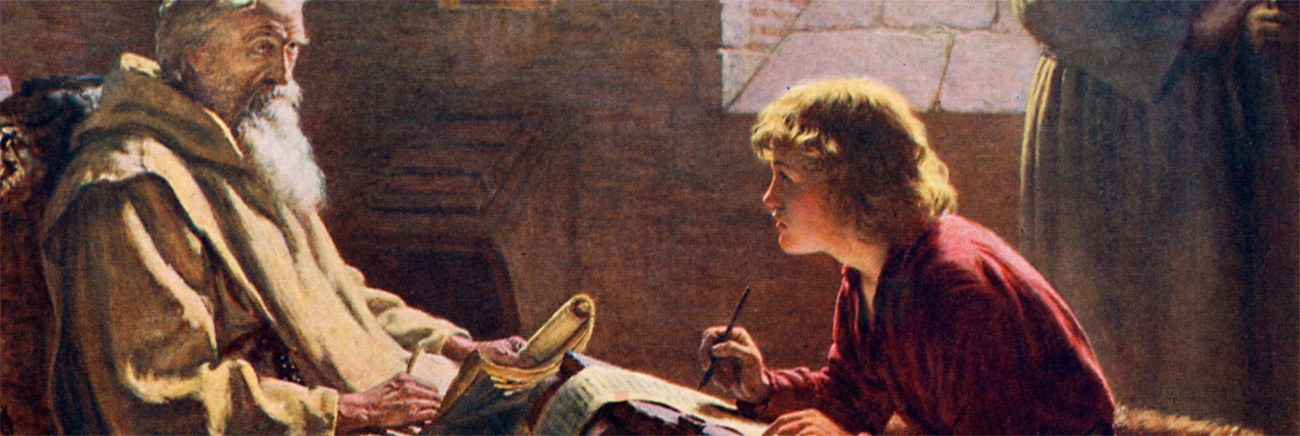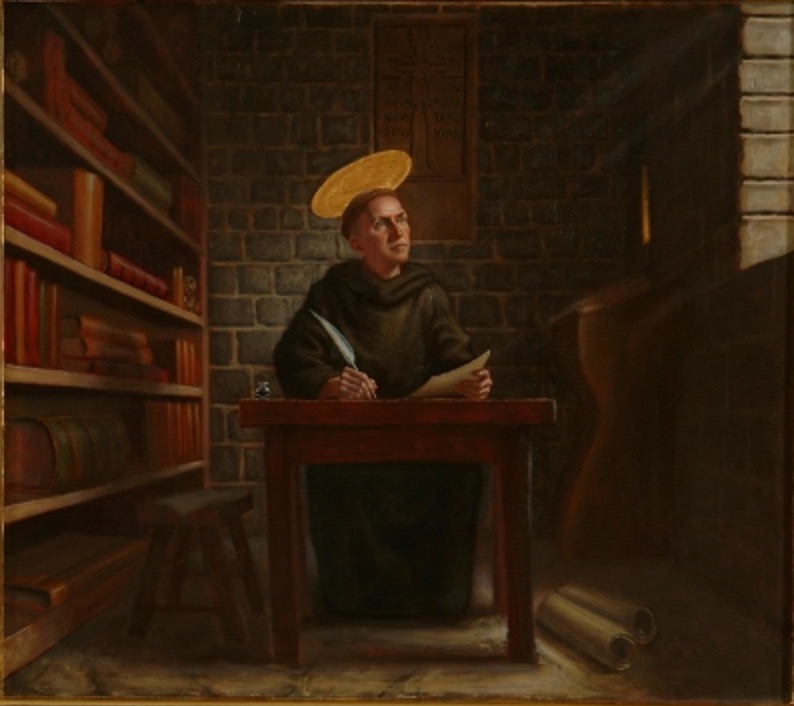Saint BedeThe Spirit that Animates Bedans | ||||
 | Saint Bede, the Venerable, after whom San Beda College University is named, was born sometime in 672-673 A.D. in Jarrow, a place between England and Scotland. He was a true-blooded Benedictine Monk. At the tender age of seven, the English lad, like the Prophet Samuel of the Old Testament, was given by his parents to the Monastery of Saint Peter at Wearmouth, Sunderland, Durham. He moved later to his second Monastery, the Monastery of Saint Paul in Jarrow. He became the administrator of the Monastery when he was only 19. St. Bede spent his 56 years on earth in these two monasteries. | |||
The saint’s life revolved around the monastic rhythm of prayer, work, study and teaching. Saint Bede declared, “I was born on the lands of this monastery, and on reaching seven years of age, I was entrusted by my family first to the most reverend Abbot Benedict* and later to Abbot Ceolfrid for my education. I have spent all the remainder of my life in this monastery and devoted myself entirely to the study of the Scriptures. And while I have observed the regular discipline and sung the choir offices daily in church, my chief delight has always been in study, teaching, and writing.” The best-known of his writings, all of which were ordered read publicly in churches during his lifetime, was “The Ecclesiastical History of the English People.” He also wrote about natural philosophy, the philosophical principles of Aristotle, astronomy, arithmetic, grammar, ecclesiastical history, the lives of the saints and especially, the Holy Scripture. |  |
 The story goes that he was too ill and weak to finish the translation. His disciple scribe Wilbert said, “Dear master, there is yet one chapter to do, but it seems very hard for you to speak.” “Nay, it is easy, take up thy pen and write quickly,” Saint Bede replied. The scribe wrote on. “And now, father, there is just one sentence more.” And Saint Bede finished the last line and breathed his last declaring, “Glory be to the Father, and to the Son, and to the Holy Spirit.” On learning of Saint Bede’s death, his contemporary Saint Boniface, the English monk who evangelized Germany, wrote, “The candle of the Church, lit by the Holy Spirit, was extinguished.” | ||
 | Like John the Baptist, no miracle was attributed to Saint Bede during his lifetime. But after his death miracles were attributed to his relics. Saint Bede’s life was extraordinary, not only for his scholarly writings, but especially for his sanctity that earned him the title the “Venerable.” Saint Bede was gentle, affectionate and generous, a man filled with love for God and his fellow human beings, a man of faith and prayer. In 1899, he was canonized as a Saint. | |||
| Today, as the Benedictine tradition continues, the fire lit by the Venerable Bede, the spirit of his writing and teachings burns within all of us, members of the community of San Beda University. (*Saint Benedict of Nursia, founder of the Order of Saint Benedict [OSB], and Saint Bede, never met. Saint Benedict was born in 480 AD and died in 543 AD while Saint Bede was born in 672/673 AD, or some 129 years later.) | ||||
images sources:
https://duboiscountyherald.com/b/exhibit-features-icons
https://artuk.org/discover/artworks/the-venerable-bede-teaching-at-jarrow-44126
https://www.thoughtco.com/the-venerable-bede-1222001
https://www.saintsfeastfamily.com/copy-of-st-bede-the-venerable-may-2-1



